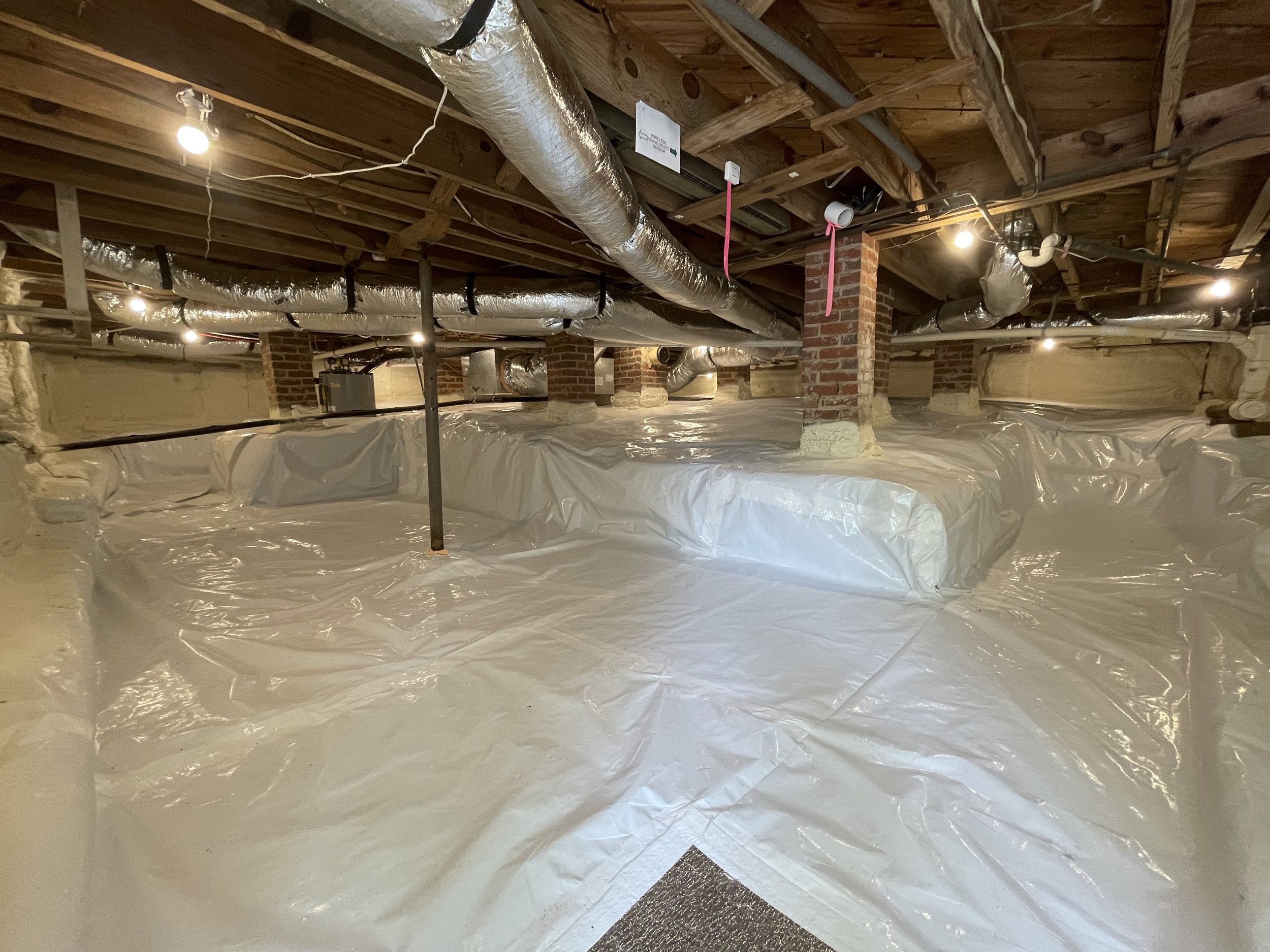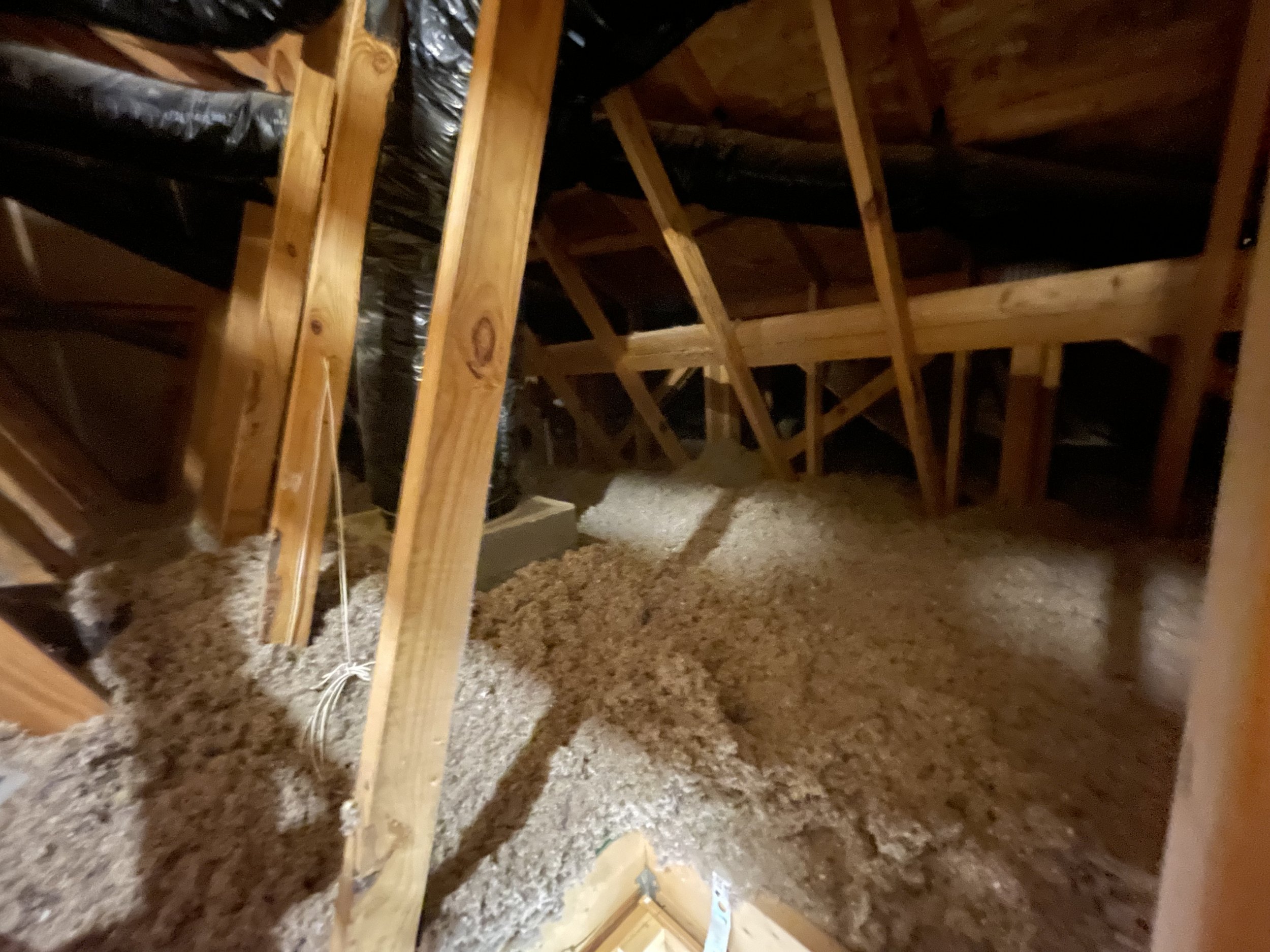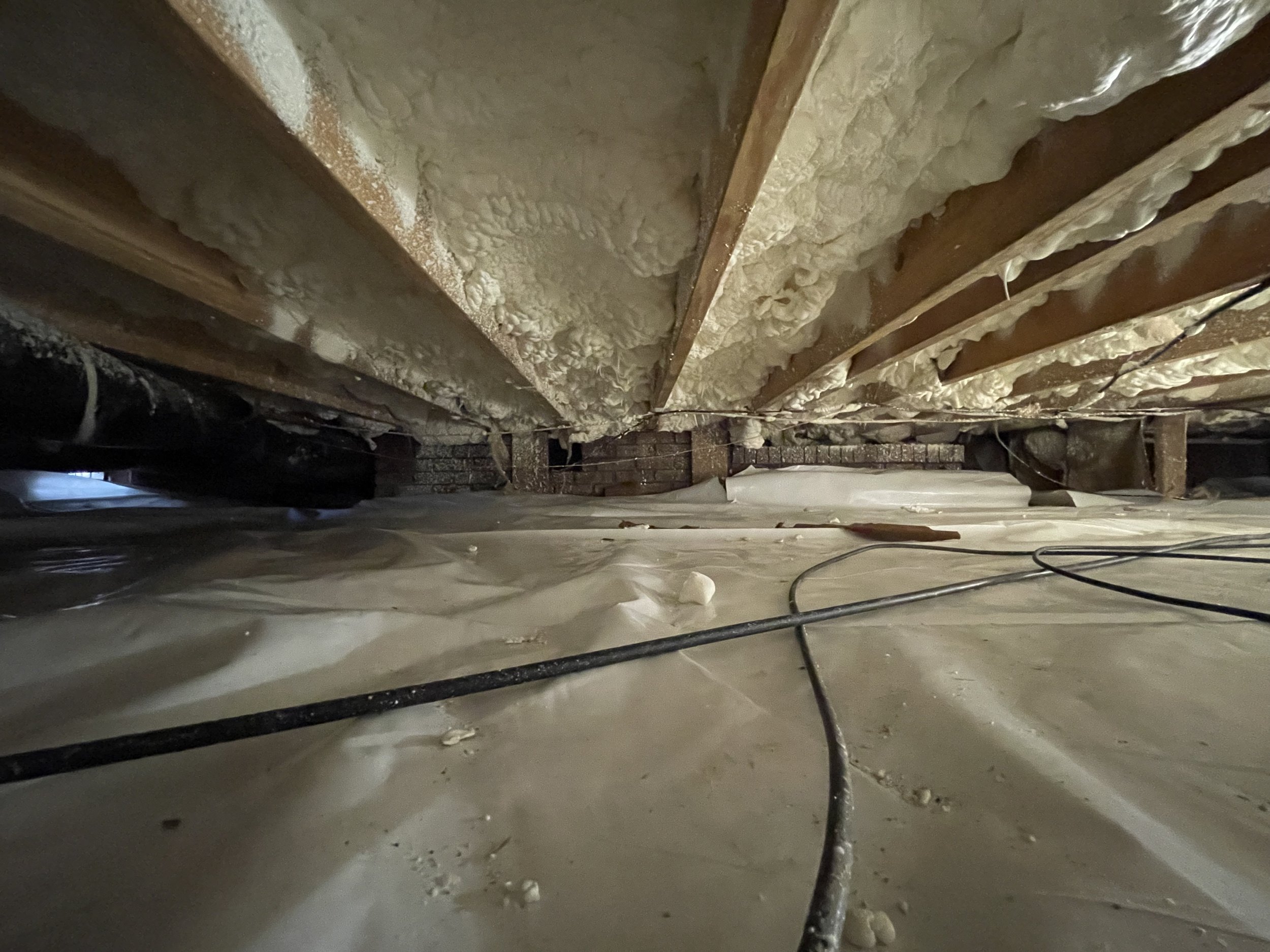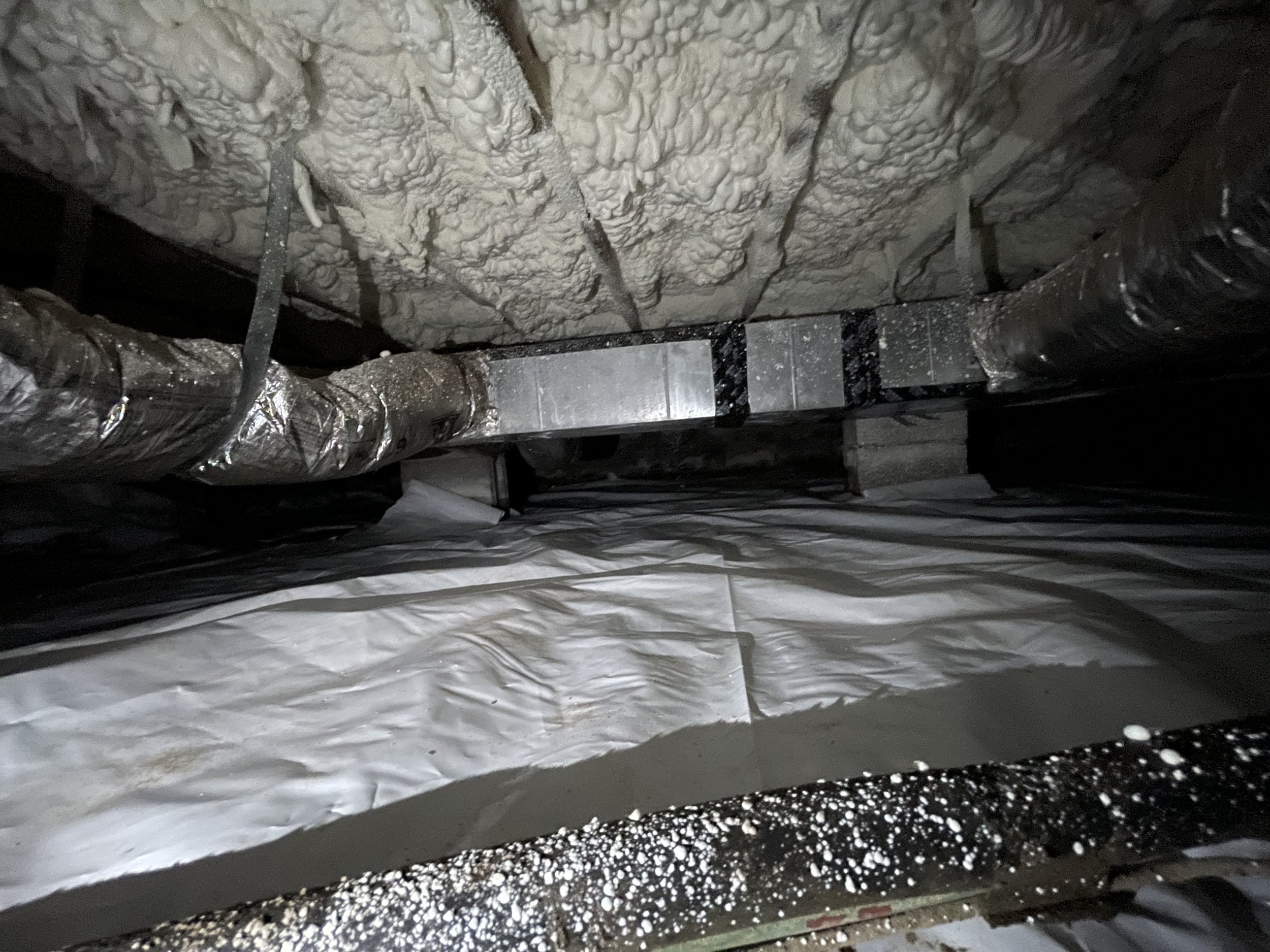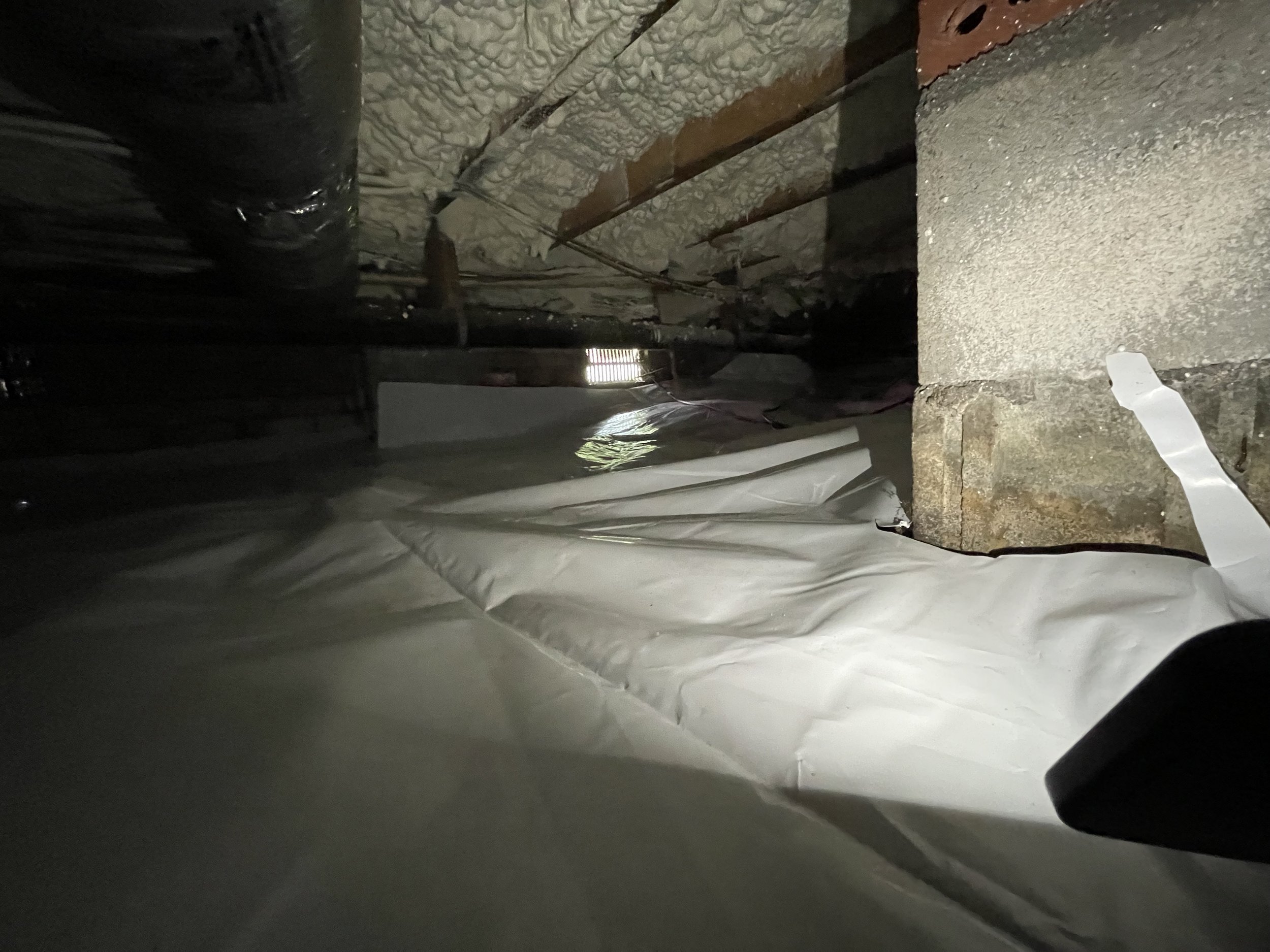Why Upgrading Your Home’s Insulation is a Must Before Winter
As the winter season approaches, homeowners face the challenge of keeping their homes warm and comfortable while managing rising energy costs. At Positive Energy Consulting, we believe one of the most effective ways to prepare your home for winter is by improving its insulation. Upgrading your home’s insulation offers numerous benefits, from energy savings to enhanced comfort and environmental impact. Here’s why now is the perfect time to invest in better insulation for your home.
1. Lower Energy Bills
Winter brings colder temperatures, which means your heating system works harder to maintain a comfortable indoor environment. Poor insulation allows heat to escape, forcing your heater to run longer and increasing your energy bills. By upgrading your insulation, you can significantly reduce heat loss, making your home more energy-efficient. According to the U.S. Department of Energy, proper insulation can save homeowners up to 20% on heating and cooling costs. With energy prices fluctuating, better insulation is a smart investment that pays for itself over time.
2. Improved Comfort
Have you ever noticed cold drafts, uneven temperatures, or chilly rooms in your home during winter? Inadequate insulation is often the culprit. Upgrading insulation in key areas like walls, attics, and floors helps maintain consistent indoor temperatures, eliminating those uncomfortable cold spots. Whether you’re relaxing in the living room or sleeping in your bedroom, better insulation ensures your home stays cozy and inviting all winter long.
3. Environmental Benefits
Reducing energy consumption doesn’t just save you money—it also benefits the planet. By improving your home’s insulation, you decrease the amount of energy needed to heat your home, which lowers your carbon footprint. At Positive Energy Consulting, we’re passionate about helping homeowners make sustainable choices. Upgrading your insulation is a practical step toward creating an eco-friendly home and contributing to a greener future.
4. Protect Your Home
In addition to keeping you warm, proper insulation helps protect your home from winter-related issues. Insulation acts as a barrier against moisture, preventing condensation that can lead to mold, mildew, or structural damage. By upgrading your insulation, you safeguard your home’s integrity, ensuring it remains a safe and healthy environment for you and your family.
5. Increase Property Value
Energy efficiency is a top priority for today’s homebuyers. A well-insulated home is more attractive to potential buyers, as it promises lower utility bills and a comfortable living space. By investing in insulation upgrades, you not only improve your current living experience but also boost your home’s market value—a win-win for homeowners.
6. Take Advantage of Rebates and Incentives
Many local and federal programs offer rebates or tax incentives for energy-efficient home improvements, including insulation upgrades. At Positive Energy Consulting, we can help you navigate these opportunities to maximize your savings. Upgrading your insulation before winter allows you to take advantage of these programs while preparing your home for the cold months ahead.
How to Get Started
Not sure where to begin? The team at Positive Energy Consulting is here to help. We offer professional energy audits to assess your home’s insulation needs and recommend tailored solutions. From attic insulation to weatherstripping and wall insulation, we’ll guide you through the process to ensure your home is winter-ready.
Act Now for a Warmer Winter
Don’t wait until the first frost to think about your home’s insulation. Upgrading now ensures your home is prepared for winter’s chill, saving you money, enhancing comfort, and protecting your property. Contact Positive Energy Consulting today at positiveenergyNC.com to schedule an energy audit or learn more about our insulation solutions. Let’s work together to make your home a warm, energy-efficient haven this winter!
What is a Home Performance Professional?
How can a Home Performance Professional help you?
When it comes to making your home more energy-efficient, comfortable, and healthy, you may have heard the term "home performance professional" thrown around. But what exactly does a home performance professional do, and how can they help you improve your home's performance? In this blog post, we'll explain what a home performance professional is and why they're an important resource for homeowners.
A home performance professional is a trained and certified expert in building science and energy efficiency. They specialize in identifying and addressing problems with a home's performance, such as air leaks, insufficient insulation, poor ventilation, and other issues that can lead to energy waste, discomfort, and poor indoor air quality. By conducting a comprehensive energy audit, a home performance professional can diagnose these problems and provide recommendations for improvements.
So, what does a typical home performance assessment involve? First, a home performance professional will conduct a thorough inspection of your home's building envelope, including the walls, roof, foundation, doors, and windows. They will look for air leaks, insufficient insulation, and other issues that can affect energy efficiency and comfort. Next, they will evaluate your home's HVAC system, including the furnace, air conditioner, and ductwork. They will assess the system's efficiency and performance and identify any problems that may be affecting energy consumption or indoor air quality. Finally, they may use specialized tools, such as a blower door or infrared camera, to detect hidden problems and areas of energy waste.
Once the assessment is complete, the home performance professional will provide a detailed report outlining the findings and recommendations for improvements. This may include recommendations for insulation upgrades, air sealing, HVAC upgrades or repairs, and other improvements that can help make your home more energy-efficient, comfortable, and healthy.
So, why should you consider hiring a home performance professional? There are several reasons why a home performance assessment can be a valuable investment for homeowners. First, it can help you identify and address problems with your home's performance that you may not have even realized were there. By improving energy efficiency, you can save money on energy bills and reduce your carbon footprint. Second, a home performance assessment can improve indoor comfort by addressing issues with air leaks, insulation, and HVAC performance. Finally, by addressing indoor air quality issues, you can improve your health and well-being.
In conclusion, a home performance professional is a trained and certified expert in building science and energy efficiency. They can help homeowners identify and address problems with their home's performance, including air leaks, insufficient insulation, poor ventilation, and other issues. By conducting a comprehensive energy audit and providing recommendations for improvements, a home performance professional can help homeowners save money on energy bills, improve indoor comfort, and promote better indoor air quality
Weekly Wrap up: 6/12/23 - 6/16/23
This week brought us a mixed bag of projects. We started out on Monday 6/12 with another closed cell spray foam install in a sealed crawlspace for The Energy Handyman. His crew did a stellar job on the sealed vapor barrier and other encapsulation details (which included building an awesome new access door). This was an older home near downtown Durham. Crawlspaces in older homes often have some quarks and can be difficult to properly air seal and insulate. This one in particular had a wide range of elevation and the foundation walls consisted of brick. Some areas had walls that were over 6’ tall, while others were less than 3’. This type of space is the reason why I am a big proponent for using closed cell spray foam rather than rigid foam board for the exterior insulation. Mechanically fastening foam board into brick is a nightmare. It often damages the bricks and doesn’t achieve a strong, durable, lasting hold. It is also nearly impossible to ensure a complete air/vapor seal. When we use closed cell spray foam, it completely forms to the foundation and adheres to the entire surface. On a foundation wall that is this inconsistent, the overall effectiveness, performance and durability of this closed cell spray foam ends up being far superior to rigid foam board.
Our technician Ajani was the lead sprayer on this job. He has been coming into his own as a sprayer. With every project he gets more consistent at hitting the proper depth and is becoming more intuitive when it comes to “reading the foam” to make small adjustments in temperatures and pressure to get things dialed in just right. The other 2 techs, Victor and Kayman, took an extra step in prep on this on that we are going to be instituting as a standard procedure in our crawlspaces from here on out. One of the issues with spray foam is that is produces overspray that can make things look a little messy. To mitigate this, the guys cut 2’ wide strips of 2mil plastic and taped it down around the entire perimeter. The end result was a clean tight line where the foam met the vapor barrier.
On the pics below, note all of the uneven areas throughout this space. You can see how The Energy Handyman’s crew had to get creative with the vapor barrier install. It is easy to understand why spray foam insulation was the only way to properly insulate this space.
On Tuesday, 6/13 we had 2 small blow in insulation projects in Raleigh. Interestingly, one of these projects called for fiberglass insulation and the other required cellulose. At the first project, We used 17 bags of Owens Corning L77 blown fiberglass to insulate this 1,000ft2 space. This was a project that we had removed the insulation months ago, after other renovations were done they were finally ready for us to come back to re-insulate. The second project was to re-insulate a 500ft2 area where the previous insulation was damaged by a plumbing leak. (Maybe I’ll do another article on why plumbing in an attic is a bad idea!!) For this we used a product that is produced right here in NC by Carolina Fibers. We’ve now used this product of a handful of projects and have been impressed by it so far!!
We used Wednesday 6/14 as a prep day for our upcoming project and on 6/15 we left the shop early to travel and hour and a half to Fayetteville for a little bit of a different crawlspace install. This was a tight space to access (as little as 18” clearance to the floor joists). I don’t like to take on projects sight unseen, but in this case we made an exception. The homeowner is very experienced in construction, new exactly what he wanted and was able to give me the information needed to put together and accurate quote. For this one, we removed the old batt insulation, installed a 10 mil vapor barrier and then insulated the subfloor with spray foam insulation. Our guys were efficient, organized and highly productive as they worked through this one. DeWitt was on sight, but wasn’t too helpful due to a sprained ankle he was nursing! The 3 technicians had the only insulation completely removed within a hour or so of being onsite. Next we started spraying the foam. Ajani started on the gun and did about 1/3 of the area, then Victor took over and finished the install. When victor started spraying, Ajani and Kayman began laying the vapor barrier. But the time victor finished all of the spray foam, Ajani and Kayman had finished 2/3 of the vapor barrier. With a 3hour round trip commute, I had expected this install to require a 12+ hour work day. However, we were wrapped up and back in Chapel Hill by 4:30pm. The transformation of this space was pretty incredible. We for sure made a major impact on improving indoor air quality in this home. As a side note, we also discovered a couple of plumbing leaks while we were working and alerted the homeowner so that he could have them repaired.
When the week started, We anticipated needing to have Friday off - however, the guys were efficient which made it possible for us to take on a last minute project in downtown Pittsboro for the Chatham County Habitat for Humanity. This was our second project for this amazing organization. We are always grateful for the opportunity to work with Habitat. We once again used Carolina Fibers cellulose insulation to insulate this attic space to R49. This exceeds the R38 code for our area. The folks at habitat are very mindful of building higher performance homes. I am always impressed by their attention to detail with critical air sealing and ventilation. Victor and Kayman worked with DeWitt to get this one done and the final result was fantastic! We hope the future residents in this home can benefit from lower utility bills and an overall healthier home.
That’s a wrap. Overall we were very happy with this productive week!
On to the next!!
A Brief Introduction to Weatherization and Its Benefits
Thermal Imaging is a tool is identify area where your home may not be properly weatherized.
Most homeowners are aware that the main function of their home is to protect them and their belongings from the elements. This is the foundation of what it means to Weatherize a building. When weatherization professionals are assessing a structure they focus on four main factors that impact comfort, energy efficiency and quality of life within a home. These factors are energy transfer, water and moisture, air leakage, and Indoor Air Quality (IAQ). Each of these elements, when not treated properly, can make a home hard to condition, and possibly even unsafe. Let’s take a closer look at each one and discuss a few things that can be done to ensure that your home is as safe and comfortable as possible.
Energy Transfer:
This refers to the way that heat moves into and out of your home. In the summer months we want to keep the air in our home cool and dry to maintain optimal comfort. In the winter, the focus is on keeping the heat that we pay to generate inside the home. A good weatherization expert will focus on creating a comprehensive plan to address the three forms of energy transfer; conduction, convection and radiation. Though it can be effective, in most climates, controlling radiant energy transfer is the lowest priority. Adding adequate insulation is essential to creating a barrier against the conduction of heat into and out of the conditioned space. The insulation, or thermal barrier, should be installed evenly, with no voids, gaps or depressions. There are varying levels of insulation required to ensure proper thermal resistance, depending on what climate zone your home is located in. The thermal resistance is measured in a term called R-value. Most climate zones in Pennsylvania call for a minimum of R19 in the floor, R19 in exterior walls and R44 in attics.
Moisture:
The element that can cause the most harm in a home is water/moisture. Improper control of moisture entering the home can cause everything from discomfort and high energy bills, to mold and structural failures. When weatherizing a home, it is imperative to create a well thought plan to control the transfer of moisture into and out of the building. Addressing any source of bulk water entering the home is a top priority. This would be roof leaks, bad gutters, drainage issues, pipe leaks, etc. The other critical area to control is the way that moisture moves in and out of the home in the form of water vapor. Establishing a correct vapor barrier on a home can be tricky and can cause serious issues if it is not done properly. The most common issues related to poor vapor control is the build of condensation. This condensation can cause building materials to rot and creates conditions that are favorable to mold and mildew growth. A well-trained weatherization expert will spend significant time identifying flaws in a building’s moisture control systems and will devise a plan to remediate those flaws.
Indoor Air Quality (IAQ):
When considering factors that impact a home’s performance, IAQ can have the most profound impact on residents’ overall health and quality of life. There are many types of contaminants that can impact a home’s IAQ. Mold spores, off gasses from furniture and carpets, soil gasses from a basement or crawlspace, high levels of humidity, outdoor contaminants, and combustion appliance exhaust can all cause significant air quality issues. Identifying sources of IAQ issues and installing measures that will help to mitigate and prevent future problems is paramount to ensuring comfort and safety in the home. There are standards set that need to be rigorously followed to ensure a home is healthy and safe when performing weatherization work. A weatherization expert will ensure that areas of concern are treated appropriately and that minimum ventilation standards are met. Proper home ventilation is essential to ensure that a building has good indoor air quality.
Air Leakage:
The most essential element to address and control when weatherizing a home is air leakage. Air leakage is the movement of air molecules into and out of a structure. Air leakage has a role in every other element previous discussed; noxious matter is moved by air, humid air entering a home is the largest source of moisture, hot and cold air can dramatically affect the temperatures in a building. The top priority of any weatherization professional is to establish a proper air barrier and control the movement of air into and out of a house. This is done by identifying leaks and sealing them proper materials. The air barrier should be contiguously aligned with the thermal and moisture barriers. Aligning these barriers is essential to create optimal building performance conditions. Again, there are industry standards with regards to the amount of air movement in a building. Adhering to these standards requires proper testing to verify that work was adequately and safely completed. The latest energy codes for residential new construction call for homes to be built as tightly as possible, and then fitted with adequately sized mechanical ventilation systems. Following this standard creates a home environment where the air in the home is properly controlled, cleaned and conditioned. This ensures the highest levels of comfort, indoor air quality and safety in a home environment.
If your home is difficult to keep comfortable, if you fear you may have issues with poor indoor air quality, or if you have issues with moisture or mold in your home, it may be time to contact a weatherization expert. Weatherization professionals specialize in building performance and address the entire home as a system. As building performance specialists, we are trained to inspect and address every part of your home to create a plan that will ensure that your home’s systems are all working together to create the best environment possible for you and your loved ones.
Insulation Basics
By insulating your home, you can prevent heat transfer, reducing your heating and cooling costs by up to 30%.
Insulating your home may seem like a small detail, but it can make a big difference in your comfort and energy bills. Insulation helps regulate the temperature inside your home, keeping it warm in the winter and cool in the summer. Insulation also reduces noise pollution. In this blog post, we will discuss the value of insulating your home and how it can benefit you in the long run.
Lower Energy Bills
One of the most significant benefits of insulating your home is that it can reduce your energy bills. When your home is poorly insulated, heat and air conditioning escape through the walls, ceilings, and floors. As a result, your HVAC system has to work harder to maintain a comfortable temperature inside your home, which increases your energy bills. By insulating your home, you can prevent heat transfer, reducing your heating and cooling costs by up to 30%.
Improved Comfort
Insulation helps regulate the temperature inside your home, making it more comfortable to live in. During the winter months, insulation keeps the warm air inside your home, preventing cold drafts from entering. In the summer, insulation keeps the hot air outside, reducing the amount of air conditioning required to keep your home cool. This helps maintain a comfortable temperature throughout your home, making it a more pleasant place to live.
Reduced Noise Pollution
Insulation not only regulates the temperature inside your home, but it also reduces noise pollution. Insulation can absorb sound waves, preventing outside noise from entering your home. This is especially important if you live in a noisy neighborhood or near a busy street. With the right insulation, you can create a quieter, more peaceful living environment.
Increased Property Value
Insulating your home can also increase its property value. When you invest in insulation, you are making your home more energy-efficient, which is an attractive feature for potential buyers. Data shows that modern homebuyers are placing a higher value on energy efficiency. An energy-efficient home is more desirable because it can save homeowners money on energy bills and reduce there environmental impact. As a result, homes with proper insulation typically sell quicker and for more than those without.
In conclusion, insulating your home can offer a range of benefits, including lower energy bills, improved comfort, reduced noise pollution, and increased property value. If you're considering insulating your home, it's essential to work with a professional to ensure that you get the right insulation for your home's needs. A professional insulation contractor can assess your home and recommend the best insulation solution for you. So, take the first step towards a more comfortable and energy-efficient home by insulating your home today!






